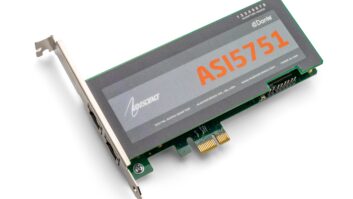Among the most important questions radio managers and engineers soon may face is how to implement IBOC DAB technology.
Radio World has asked Ibiquity Digital Radio to answer common IBOC questions in this space. The first is answered by Broadcast Technology Manager Jeff Detweiler.
Q: I am planning a new studio build-out and want it to be ready for IBOC. What digital audio sample rate and what synchronization considerations should I base my design around?
A: Ibiquity’s in-band, on-channel technology integrates digital audio in the IBOC exciter at a sample rate of 44.1 kHz. This sample frequency was selected because of its availability in CD-equipped automotive receivers and meets the desired audio bandwidth requirements.
Sampling frequency determines the limit of audio frequencies that can be reproduced digitally. One of the most important rules of sampling, the “Nyquist Theorem,” states that the highest frequency that can be accurately represented is equal to one-half of the sampling rate.
So if the desired bandwidth is 20 kHz, it must be sampled at least twice as frequently (i.e., over 40 kHz). If the resolution bandwidth is less than twice the audio sampling frequency, spurious artifacts may be produced.
In the case of IBOC FM, which has an equivalent audio bandwidth of 20 kHz, it is desirable to use a sample frequency at or above the standard 44.1 kHz. IBOC AM has an equivalent audio bandwidth of 15 kHz and requires at least the standard 32 kHz sample rate.
For the sake of compatibility of AM and FM program material, it is suggested that you standardize on a sample frequency at or above 44.1 kHz. If you are not able to standardize on 44.1 kHz at the studio and over the STL path, you can always convert the rate prior to the AES input of the IBOC exciter.
In addition to sample frequency, you should also carefully consider methods of synchronization. Professional digital systems not only offer AES3 digital audio output, but also have provisions for external AES3 synchronization.
The synchronization input should be fed with a highly stable AES3 reference signal, which normally originates from a sync generator. Digital audio tape (DAT), MiniDisc, hard-drive-based mass storage systems and editors may have external sync inputs that should be fed an AES reference or 44.1 kHz square-wave word clock.
Selection of this timing reference is one of the most critical choices made in a digital facility. Instability of the digital master clock, better known as “jitter,” is more critical than bit-rate resolution. Some timing references use crystals with 50- or even 100-ppm tolerance, which provide a less-than-desirable master clock.
It is also possible to use an AES sample rate converter (SRC) with a GPS input as the system clock. If a converter of this type is used at both studio and transmitter, the two locations may be effectively locked together.
While it is not mandatory to adopt these recommended sampling rates and synchronization methods to broadcast an IBOC signal, following these recommendations will help you maximize the increase in quality and performance that IBOC offers.
Please send us your own IBOC questions for a reply in this space. E-mail to [email protected].
Radio World welcomes other points of view.












